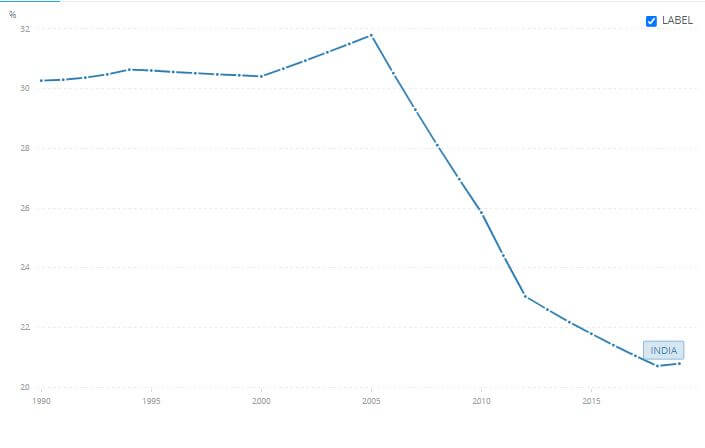How to Make A Successful Comeback After A Career Break
At a recent training for fresher hire as part of an MNC’s analytics training program, my colleague Dr. Chetana highlighted that only 10% of the hires were women. TrustRadius reported that in 2021, 72% of women in tech are outnumbered by men in business meetings by at least a 2:1 ratio. Women are less than 1/3rd of the employees in many tech companies. As per the latest data by catalyst, women are only 5.8% of the CEO pool in the S&P 500 companies in the US!
Women constitute a low percentage of student intake in most of our premier engineering colleges. A quick check of the top 10 engineering colleges in India based on NIRF ranking shows a similar low female participation.
| Rank | Engineering College | Student Strength in 4-year UG Program | No. of Female Students | % of Female Students |
| 1 | Indian Institute of Technology Madras | 1,814 | 272 | 15.0% |
| 2 | Indian Institute of Technology Delhi | 2,856 | 345 | 12.1% |
| 3 | Indian Institute of Technology Bombay | 2,795 | 307 | 11.0% |
| 4 | Indian Institute of Technology Kanpur | 3,184 | 303 | 9.5% |
| 5 | Indian Institute of Technology Kharagpur | 2,251 | 224 | 10.0% |
| 6 | Indian Institute of Technology Roorkee | 3,123 | 321 | 10.3% |
| 7 | Indian Institute of Technology Guwahati | 2,470 | 267 | 10.8% |
| 8 | Indian Institute of Technology Hyderabad |
969 | 186 | 19.2% |
| 9 | National Institute of Technology Tiruchirappalli | 2,719 | 662 | 24.3% |
| 10 | Indian Institute of Technology Indore | 798 | 88 | 11.0% |
| Top 5 Engineering colleges as per NIRF | 12,900 | 1,451 | 11.2% | |
| Top 10 Engineering colleges as per NIRF | 22,979 | 2,975 | 12.9% |
Data Source: NIRF
Not that it was always the case! Women were the pioneers in computing and made significant contributions to the field. History is written by the winners, or, in this case, predominantly males, and much of this contribution was left unattributed for decades. In an earlier article, I had written about why it’s critical to have more diversity in AI. Lower female participation in AI has unintended negative consequences to making the future more biased.
India has among the lowest female workforce participation in the world! According to World Bank data, a mere 20.79% of the workforce (for ages 15+) in India is female, compares to 47.29% worldwide. Alarmingly, this percentage has been falling since 2005, and initial reports by agencies including Oxfam and TrustRadius suggest the COVID-19 pandemic has further negatively impacted this trend in India.
Image source: World Bank
Besides low participation, women also struggle with salary disparity, often being paid 20% lower for equivalent work. This is compounded by the unequal workload distribution at home as well as the role as the primary caregiver. The challenges are more difficult for women looking to return from a career break – for multiple reasons, including marriage, maternity, spouse travel to a forging country where they did not have a work visa, taking care of elderly family members.
Over the last few months, as hiring has resumed post-COVID, it has been heartening to see many companies ask us for focused hiring of women to improve the demographic mix of employees. We think it’s a step in the right direction to have a more balanced workforce.
Returning to work has been a difficult transition for many. And, experiences with many of our female students had reinforced the message that it is unlikely to be smooth. Here are a few things that can help make the process less difficult:
1. Ask your network for help
Many people make the process of getting back to work personal and do not involve the vast networks that know and trust them. Reach out and make it known you are back in the job market. The kindness of strangers and your network often springs a pleasant surprise!
2. Don’t just apply to jobs; Converse with stakeholders
Use professional networks like LinkedIn not just to apply to jobs but to connect with people in the prospective company. Understand the work culture, check your fit and possibly even get a job referral. Reaching out to hiring managers and recruitment personnel in your target companies helps bring you to their attention.
3. Apply at the companies that have getting back to work webpages
Many companies have specific web pages for women returning to work. I have listed out some of them to help you get an idea.
- Tata Group – Second Careers, Inspiring Possibilities
- IBM – Tech Re-entry Program
- Accenture – Career Reboot
- Hindustan Unilever – Career by Choice
- Goldman Sachs India Returnship Program
It often makes sense to apply through this channel to improve your chances of being interviewed.
4. Build skills and get certifications in areas of interest
Look at re-skilling yourself into an area of interest. Thanks to MOOCs and the booming EdTech sector, there are plentiful ways to gain more skills and certifications in areas of interest. Add them to your resume to make you stand out. Also, add projects, and any other work done by you, to help to distinguish you from the applicant pool.
5. Keep the faith!
A job hunt is a lonely and often saddening experience. No reverts after multiple applications, interviews that did not go well, offers that are put on hold due to any small reason may make the process difficult and depressing. Keep the faith. Your job may be just one application away!
Overall, it is essential to have a pathway for everyone to seek meaningful employment. It is heartening to see many companies taking the step to help women return to the workforce and reinvent their careers. And it is essential to have more ladies back to work for the nation’s prosperity and make the workplace a more equitable and fairer place!
Remember, a setback is but a setup for a great comeback. So, don’t lose hope and continue your job hunt! Good luck!











